Australian Optometrists Who Made History
These articles are profiles of people who have made important contributions to the development of optometry in Australia. Each article provides a snapshot of the historical context of the times. Together they provide a picture of the development of optometry in Australia in the 20th C. The articles are more or less listed in historical chronological order. The articles were originally published in Clinical and Experimental Optometry and some of them were written using material sourced from the Kett Museum and Archive.
-
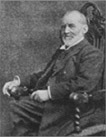
Henry Vanheems (1831-1917). Private tutor in optometry
Vanheems was a much respected private tutor in optometry in the late 19th C and early 20thC when there was no formal training in optometry: optometrists taught themselves or were taught by their employers or private tutors. There was no regulation of optometrists so anyone could practise regardless of their training. VanHeems practised and taught in Melbourne and was made the first honorary life member of the Victorian Optical Association in recognition of his work training optometrists and advancing educational standards.
Download a profile of Henri Vanheems by Wolfgang F Gartner Clin Exp Optom 2006; 89: 100-101 -
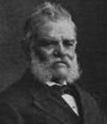
Thomas Robert Procter (b England 1826– d Melb 1905) The first in New Zealand to prescribe sphero-cylindrical lenses to correct astigmatism
Thomas Procter was born in England and migrated to Australia in 1849 at the age of 23 where he pursued a chequered career as a metal worker, gold prospector, silversmith and jeweller. He may have sold glasses when he was a jeweller in Ballarat. He returned to England in 1857 but came back to Australia in 1861, but only briefly before leaving for New Zealand to seek his fortune in the new gold fields in Otago, but he soon resumed business as a jeweller. He taught himself how to sight-test and acquired a Dr Ackland's optometer. He wrote a quite well informed promotional treatise on sight-testing and glasses in 1883. With the assistance of a London trained optician, William Pugh, he set up his own workshop to grind lenses and fit them to spectacle frames, including sphero-cylindrical lenses for astigmatism. He was the first sight-testing and manufacturing optician in New Zealand and in 1881 was the first to prescribe and supply glasses to correct astigmatism. He returned to Australia in 1888 to practise optometry in Albert Street, Melbourne until his death in 1905.
Download a profile of Thomas Procter by Barry Cole Hindsight: J Optom Hist 2017; 48 (2): 34-51. -
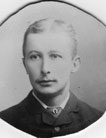
The Werner family (1852-1990). First to qualify in London
This is the story of a family dynasty of optometrists who went to London to obtain their training and qualifications in optometry. Carl Werner (b1852) was the very first person to qualify in 1898 for the then new Fellowship of the Worshipful Company of Spectacle Makers (FSMC) in London. His three sons, Fred (b1889), Roy (b1891) and Max (b1893) also qualified in England, as did a number of Australian optometrists before there was formal training in Australia. Fred and Roy were leaders in the profession in the first half of the 20th C.
Download a profile of the Werner family by Wolfgang F Gartner Clin Exp Optom 2008; 91:412-414 -
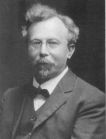
Newham Waterworth (1867-1949). Steered the first Optometrists Registration Act in Australia through the Tasmanian Parliament in 1913
Newham Waterworth was born in England and emigrated with his family to Hobart in Tasmania at the age of 19. He had little education and no trade qualification and worked in several occupations before journeying to Brisbane in 1985. There he taught himself hypnosis and magnetic healing and earned quite a name in treating nervous disorders by these methods. He spent a year in Sydney, about 1904, where he studied optometry under Harry Cole, a Sydney optometrist. He returned to Hobart and established a successful optometry practice. He was active in the affairs of his church, his profession and in politics. He was a lay preacher in the Baptist church and active as Secretary and President of the Tasmania Optical Society. Later he was National President of the Optometric Association from 1922 to 1924. He joined the Liberal Democratic league when it was formed in 1908 and was its secretary and spokesman. Through this he became well known to the editorial leaders of the Tasmanian press and people. He stood as a Labour Party candidate in 1912 but was not elected. He drafted a Bill for the registration of optometrists based on USA precedents (at the time 27 US States had registration for optometrists) and the Bills for registration in New South Wales and Queensland presented to the parliaments in those States in 1906, 1909 and 1911 but not passed. His draft Bill was presented to the Tasmanian Parliament in 1913 by Joseph Lyons, who was later to be Prime Minister of Australia. The Bill was opposed by the medical profession but Waterhouse had the press on his side and the Bill became law. This was the first Act of Parliament to legally recognise and regulate the practice of optometry in Australia and became the model for all the State Registration Acts that followed from Queensland (1917) to Victoria (1935).
Download a profile of Newham Waterworth by Charles Wright in Aust J Optom 1980; 63: 145-148 -
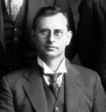
William George Kett DSc (hon causa UNSW) FSMC (1887-1962) Key figure in advancing optometric education, the formation of a national professional association in 1918 and the founding of a national professional journal
William Kett was a key figure in the history of optometric education in the State of New South Wales and a national professional leader. He studied medicine at the University of Melbourne but did not complete the course because of the premature death of his father. He then studied optometry under the private tutorship of Henri van Heems (see above) later moving from Melbourne to Sydney to take up a position in an optometry practice. He travelled to London to further his studies in optometry and obtained his Fellowship the Company of Spectacle Makers in 1914 having studied under the pre-eminent Lionel Laurence. On his return to Sydney he immediately became active in the affairs of his profession. He became Director of Education for the Institute of Optometrists of NSW and established a part-time 2-year optometry course about 1916. He played roles in the formation of the National Optometry Association in 1918 and in securing Registration of optometrists in NSW in 1930. He promoted the idea of a national optometry journal and was its Editor for an extraordinary 42 years, from 1920 to 1962. He was appointed a foundation Councillor of the University of NSW (1949-1962) and was instrumental in making sure the optometry course at the Sydney Technical College moved to the new university in 1949.
Download a profile of William Kett by Barry L Cole Clin Exp Optom 2000; 81: 283-287 -
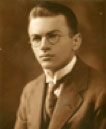
Ernst Goetz (1903-1979). First optometrist to fit contact lenses in Australia.
Ernst Goetz was a bold and innovative clinician who trained in Germany and migrated to Australia in 1925 to practise in Melbourne. He was the first Australian optometrist to fit contact lenses, which he did in the late 1920s. It was not until the 1950s that other optometrists began to fit contact lenses and not until the 1960s that it became a mainstream part of optometry. This article describes some of the history of contact lens practice in Australia in those years. Goetz also provided low vision care for the partially sighted, which was most unusual at the time. He had trained at the optometry school in Jena, Germany, obtaining his masters certificate in 1924. He had learned about scleral contact lenses and low vision aids during his studies because Zeiss was located in Jena and made scleral contact lenses and spectacle mounted magnifying systems for low vision.
Download a profile of Ernst Goetz by Wolfgang F Gartner Clin Exp Optom 2008; 91:566-570 -
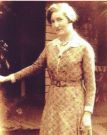
Ida Emily Ghent (1899-1985) One of the first women to practise optometry in Australia
There were very few women optometrists until about 1970. Ida Ghent was one of the first. She was born in Bristol England in 1899 and migrated to Australia about 1915. She worked as a bookkeeper or accountant before embarking on the course for Fellowship of the Victorian Optical Association, the precursor to the Optometrists Association Victoria. She graduated with distinction in 1921. She was awarded the Medal of the VOA for obtaining the highest marks in the course at the Association’s AGM on July 22 1922. She established her own practice in Shepparton, Victoria where she remained until about 1940. Registration of optometrists was introduced in Victoria in 1935 and she was one of six women among the 286 optometrists that were registered in 1936. The Kett Museum has her Certificate of Membership of the VOA of August 21 1922 and her Certificate of Associate Membership of the Australasian Optometrical Association dated 1927. The Museum also holds copies of her lecture notes, a photograph of her practice in Shepparton and a menu of the VOA Congress dinner signed by her and other attendees.
Download Ida Ghent's certificate of Associate Membership of the Australasian Optometrical Association dated May 1926 -
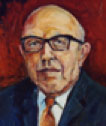
Bertram Nathan FSMC FIO (1891-1977). Secured registration of optometrists in Victoria and the first four-year university-level optometry course in Australia
This is the story of intrigue and the battle with ophthalmology in the profession’s endeavours to obtain legislation to regulate the practice of optometry and to establish the first four-year university-level optometry course in Australia. Bertram Nathan played a leading role in these battles with politicians, Knights of the Realm and the Chancellor of the University. He won the battles. An Opticians Registration Act was enacted in 1935 and Bertram Nathan was appointed the first chairman of the Opticians Registration Board. He then battled vested interests in the University of Melbourne to get its approval and cooperation in providing the four-year course to replace the 3-year part-time fellowship course run by the Victorian Optical Association. The successful culmination of these battles brought about the formation of the Australian College of Optometry in 1940, although not without a very disruptive battle of personalities within the profession.
Download a profile of Bertram Nathan by Barry L Cole Clin Exp Optom 2009; 92: 511-518 -
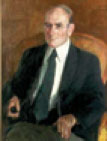
Donald Herbert Schultz DSc (hon causa Flinders) (1910-1987) Educator, inventor and benefactor.
Donald Schultz trained as an optical technician by apprenticeship and then as an optometrist in the State of South Australia. He was the first student to enrol in the optometry course run by the SA Optometrists Registration Board and provided by the University of Adelaide. He qualified in 1929 and became the principal lecturer in the course soon after completing it, a role he filled for 24 years. He was co-founder of SOLA, which was one of the first companies to make CR39 lenses and became an Australian based multi-national company. Don Schultz was the technical brains behind the company. He designed many optical instruments, some for the Ministry of Defence during World War 2. He was generous with his fortune made though SOLA giving significant financial support to the Flinders University and the National Vision Research Institute.
Download a profile of Donald Schultz by Rodney D Watkins Clin Exp Optom 2004; 87: 187-190 -
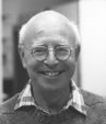
Gerald Westheimer DSc (hon causa SUNY, Univ Calif) PhD BSc ASTC FRS. (1924 - ) First Australian optometrist to embark on a research career
The profession of optometry was pre-occupied in the first half of the 20thC with achieving recognition as a profession and the development of education. There was little or no research done by Australian optometrists in those first 50 years although some optometrists wrote articles for optometry journals. Gerald Westheimer was the first Australian optometrist to pursue a research career. He had qualified as an optometrist at the Sydney Technical College in 1944 and subsequently completed a BSc degree at the University of Sydney in 1947. He travelled to the United States to study for a PhD degree in 1951 in the optometry college at the Ohio State University, which he completed in 1953. He then pursed an academic career principally at the University of California at Berkeley and quickly established his reputation as a distinguished vision scientist. He has been much honoured by the award of research medals and honorary doctorates. He was made a Fellow of the Royal Society in 1985. He was recognised in Australia in 2009 by the award of the H Barry Collin Research Medal by Optometrists Association Australia.
Download a profile of Gerald Westheimer by Donald E Mitchell Clin Exp Optom 2001; 84:296-300 -
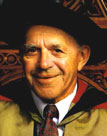
John Nathan OAM DSc (hon causa Melb) MAppSc BSc LOSc (1924-). Head of the new 4-year optometry course from 1950 to 1964: made it a degree course in the University of Melbourne and started the first optometry research group in Australia
John Nathan was the first diplomate of the 4-year optometry course of the Australian College of Optometry, graduating with his Licentiate of Optometric Science (LOSc) in 1944. He also completed a BSc degree since the optometry course required 2 years of study of BSc subjects in the University of Melbourne and one further year of study earned the BSc degree. He was appointed Head of the Victorian optometry course in 1950 at the age of 26 but it was a part time appointment. He consolidated the new four-year course and gave inspirational clinical leadership. He negotiated the course being transferred to the University of Melbourne to become a degree course in 1960. He also initiated, in 1960, a successful research program. He resigned as Head of the School in 1964 but continued as a senior clinical teacher for many years. He later became President of the Victorian College of Optometry from 1970 to 1978 during which time the Nartional Vision Research Institute of Australia was established by the College. He was admitted to the degree of Doctor of Science honoraris causa in 1994 and was awarded the Medal of the Order of Australia in 2013.
Download a profile of John Nathan by David M Cockburn Clin Exp Optom 2001; 84: 91-93 -

Penhryn Thomas BScOptom ASTC (1918 – 2010). Contact lens pioneer, innovator and entrepreneur
Penhryn Thomas qualified in optometry at the Sydney Technical College in 1939 and almost immediately showed his entrepreneurial flair. He began fitting glass haptic contact lenses under the tutelage of the eminent Sydney optometrist WG Kett at a time when few practitioners fitted contact lenses, well before the corneal contact lens was developed and before plastics were used in their construction. He established a city practice in Sydney specialising in contact lenses. He was the first Australian optometrist to manufacture haptic contact lenses using polymethyl methacrylate. He made plastic contact lenses for his colleagues and also taught them mould the eye and fit lenses. He founded the Corneal Lens Corporation Pty Ltd in 1949 for commercial production of contact lenses, and in 1951 the company began the manufacture of corneal microlenses. He later developed his own contact lens designs, the Conoid lens in 1962 and later the Clitan lens. He wrote a book on contact lens fitting and toured Australia and New Zealand to teach contact lens fitting. He was very influential in bringing contact lens fitting into mainstream optometric practice in Australia in the 1960s and he also had a significant international presence.
Download obituary for Penhyrn Thomas by Ian Sim in Clin Exp Optom 2010; 93: 273- 275 -
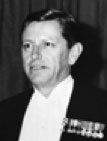
Noel Verney DFC FBOAHD Dip Orth (1921-1980). Leader of optometric education in Queensland
This article is part of the story of the early years of optometric education in the State of Queensland. Noel Verney headed optometric education in Queensland from 1949 to 1980. He was appointed Clinician-in-Charge of the then newly established Queensland College of Optometry in 1949 when the course was provided jointly by the College and the Central Technical College. He was also chairman of examiners for the Queensland Registration Board. In 1965 the course was transferred to the Queensland Institute of Technology (QIT) and he was its senior lecturer until his death in 1980.
Download a profile of Noel Verney by Peter G Swann Clin Exp Optom 2001; 84: 205-206 -
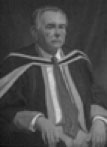
Josef Lederer MSc ASTC (1921-2007). The first professor of optometry in Australia
Josef Lederer was an immigrant from Austria, arriving in Sydney with his family in 1939 after an adventurous journey fleeing the rise of Fascism in Germany. He studied optometry at the Sydney Technical College and did so well he became the first full-time lecturer and head of the course in 1947, three years after he had qualified. He remained head until his retirement in 1982. He steered the optometry course from the Sydney Technical College to the new University of NSW, made it a 4-year full time course leading to a degree, the first in Australia. He became Professor in 1976 to be the first professor of optometry in Australia and the first in the British Commonwealth of Nations. He promoted the skills of optometrists in low vision care and devised the Lederer lens in 1957, laying the foundations for optometry to take a leading role in low vision rehabilitation from the 1970s.
Download notes on Professor Josef Lederer's career by Charles Wright Aust J Optom 1982; 65: 52-55 Download a profile of Josef Lederer by John A Alexander Clin Exp Optom 2001; 84: 171-174 Download an obituary for Josef Lederer by Barry Cole Clin Exp Optom 2007; 90: 388-387 -
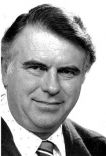
Geoffrey Herbert Henry (1930 – 2010) DSc MAppSc BSc LOSc. Saved the Australian College of Optometry and began its new era
Geoffrey Henry obtained his Licentiate of Optometric Science (LOSc) from the Australian College of Optometry in Melbourne in 1951. He already had a BSc degree in physiology with first class honours from the University of Melbourne. He was elected to the College Council in 1954, at the age of 24, and one year later became the First Vice-President and Chairman of Council. The College was in dire straits: it had few students, little income and its liabilities were greater than its assets. With the Treasurer of the College, Bertram Nathan (see above) he persuaded the Victorian Government to make a recurrent grant to solve the College’s financial woes. He then lead the Council to appoint the College’s first full-time lecturer and to buy land for a new College home in Carlton, near the University of Melbourne. He, with Bert Nathan, got another grant from the government to build on the site. All this was done in the space of 5 years. While he was Chairman the College became affiliated with the University of Melbourne in 1961 and the optometry course of the College became a degree course. He then joined with Barry Cole and John Nathan to start the College’s first research program, which was highly successful. He won a Churchill Fellowship and travelled overseas to research with DeVallois and Rushton. On his return in 1968 he sold his practice and embarked on a research career at the Australian National University to become a world recognised vision scientist.
Download an obituary for Geoffrey H Henry by John Nathan Clin Exp Optom 2010; 93: 184-185 -
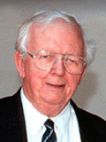
Brian Layland OAM BSc(Optom) ASTC (1930 - ). Expanded recognition of optometry’s skills and its role in health care
While Registration Acts had been passed by the State parliaments in the period from 1913 to 1935, by the mid point of the 20th C the profession still had little other community recognition except as a profession to relied upon to test vision and prescribe and dispense glasses. Ophthalmologists were still providing primary eye care and general medical practitioners preferred to refer to them rather than to optometrists. The situation was exacerbated in 1953 when the Menzies Liberal government introduced a health insurance program that provided rebates for ophthalmologists’ eye examinations but not optometrists. Brian Layland qualified in optometry in that year and quickly became involved in the politics of addressing this problem. He became a NSW State councillor in 1955 and remained active for decades, becoming a National Councillor in 1971 and National President 1976 to 1979. He worked tirelessly, along with colleagues Bruce Besley, Arthur Ley, and AOA Executive Director Damien Smith to have optometry included in the Federal government’s health insurance scheme. This was achieved in 1975 along with inclusion in the government’s Veteran Affairs health scheme. He also fought the battles to allow optometrists to use diagnostic drugs, which was achieved in NSW in 1970. His is a story of persistent political intrigue.
Download a profile of Brian Layland by Brien Holden and Kylie Evans in Clin Exp Optom 2003; 86: 260-264 Download a profile of Dr Damian Smith, Executive director of the Australian Optometric Association 1973 to 1980 by H Barry Collin in Clin Exp Optom 2002; 85: 256-259 -
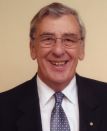
Barry L Cole AO DSc (hon causa SUNY) DUniv (Hon causa QUT) PhD MAppSc BSc LOSc (1934-) Second professor of optometry in Australia. Lead change in the second half of the 20th C.
Barry Cole was a diplomate of the Australian College of Optometry and completed a BSc degree at the University of Melbourne. He was appointed the first full-time lecturer in the Australian College of Optometry in 1959. He became the Head of the School in 1964. In 1973, when the Department of Optometry was established in the University of Melbourne, he became Head of the new Department and conjointly the Director of the Victorian College of Optometry. He was appointed to the foundation chair of optometry in 1978. He built a strong graduate school and a vigorous research program. Under his leadership the College built its clinic to become a major public health provider of eye care and optometry became a major player in low vision care through arrangements with the Association for the Blind. With the support of colleagues and the profession he founded the National Vision Research Institute as an autonomous arm of the College.
Download an article about Barry Cole by John Nathan Clin Exp Optom 1998; 81: 237-238 Download another article about Barry Cole by Pauline Jones in Aust J Optom 1978; 61: 345-346 -
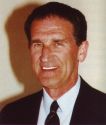
H Barry Collin AM DUniv (hon causa QUT) DSc PhD MAppSc BSc LOSc (1933-) Third professor of optometry in Australia and leader in research
Barry Collin was a diplomate of the Australian College of Optometry and completed a BSc degree at the University of Melbourne. He was appointed lecturer in the Victorian College of Optometry in 1962 and quickly established a reputation for high quality research in the biological mechanisms of eye disease and eye injury. He showed that optometrists could contribute to the expansion of knowledge of eye disease through ‘wet’ laboratory research. He published in the leading ophthalmology journals, won the Shorney prize for best work in ophthalmology and was elected a Fellow of the Royal College of Pathologists London. He was appointed professor and head of school at the University of NSW in 1982 succeeding Professor Lederer.
Download a profile of Barry Collin by Barry Cole Clin Exp Optom 2001; 84: 39-42 Download another profile by Ken Polse Optom Vis Sci 2009; 86: 84-91 -
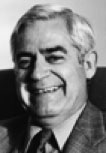
David M Cockburn OAM DSc (hon causa Melb) MScOptom LOSc (1925-2016) Changed the scope of clinical practice of optometry
David Cockburn graduated in optometry from the Australian College of Optometry in 1950 when optometry was much more limited in scope than it is today. He devoted his professional career to pushing the boundaries, both in his own practice and in 40 years of teaching in the University of Melbourne. He pushed optometry to take on tonometry in the 1960s despite the impediment of not being permitted by law to use topical anaesthetics. He introduced the profession to binocular indirect ophthalmoscopy, gonioscopy, lacrimal lavage and the removal of corneal foreign bodies. He laid the foundation for optometry in Australia to undertake primary care treatment of eye disease using therapeutic pharmacological agents. He did chairside research and published numerous papers. He was a popular continuing education lecturer throughout Australia. He was the foundation chairman of continuing education in the Victorian College of Optometry for 15 years and one of the co-founders of the National Vision Research Institute, the Board of which he chaired for 17 years.
Download a profile of David Cockburn by Barry Cole Clin Exp Optom 2003; 86: 57-62 -

Ian F Bailey MSc BAppSc LOSc (1942-). Pioneer in low vision
Ian Bailey graduated in optometry in the University of Melbourne in 1962. He was in the second cohort of students to complete the new degree course. This article tells of life as an optometry student in days when the optometry school was still finding it way and was greatly under-resourced. He was in a magical year: among his fellow students were Tony Adams who was to become Dean of the School of Optometry at the University of California and Donald Mitchell who was pursue a brilliant research career. Ian became a lecturer and clinic administrator in the Victorian College of Optometry in 1968. In that position he set up the first multi-disciplinary low vision clinic in Australia with the Association for the Blind in 1972. He was then appointed the first full-time researcher in the National Vision Research Institute in 1974 where, with Jan Lovie, he invented the LogMar visual acuity chart. This was the foundation on which he became a world leader in low vision.
Download a profile of Ian Bailey by Anthony Adams and Jan Lovie-Kitchin Clin Exp Optom 2004; 87: 37-41. Download a profile of Associate Professor Jan Lovie-Kitchin by Barry Cole Clin Exp Optom 2007; 90: 214-216. -
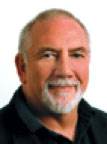
Brien A Holden OAM DSc (hon causa City University and SUNY) PhD BScOptom LOSc (1943-2015) Scientia Professor University of NSW. Bold leader in contact lens research and public health optometry.
Brien Holden is another graduate in optometry from the University of Melbourne who has made waves. He did his PhD at the City University in London and became a lecturer in the University of NSW. He established the Cornea and Contact Lens Research Unit, which he used as the foundation for two generously funded Centres of Excellence, the Co-operative Research Centre for Eye Research and Technology succeeded in 2001 by the Centre for Vision Research. In addition to leading these two very large research centres, Brien has also pursued a social agenda by founding the Institute for Eye Research, which among other things supports global programs to prevent blindness. The Institute was named the Brien Holden Vision Institute in 2010. He is a much honoured world figure in the fields of contact lenses and prevention of blindness. The University of NSW appointed him professor in 1990 and Scientia professor in 2001.
Download a profile of Brien Holden by Charles McMonnies Clin Exp Optom 2001; 84: 366-371. -
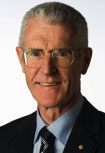
Kenneth J Bowman AM MSc LOSc (1950-) Transformed optometric education and research in Queensland. Fourth professor of optometry in Australia
Ken Bowman was appointed head of the Department of Optometry at the Queensland Institute of Technology (QIT) in 1981, at the youthful age of 34. He was a graduate in optometry in the University of Melbourne and had intended to develop his career as a clinical leader and researcher in the Victorian College of Optometry until he was head-hunted for the post at QUT. His immediate task was to implement the new 4-year degree course that had been agreed by QIT and establish a credible research program so as to catch up with the other Australian schools of optometry. He did this well, so well that he found himself acting as Pro-Vice Chancellor and Deputy Vice Chancellor of the new Queensland University of Technology, when QIT got its university charter. He became the Executive Dean of the Faculty of Health and in that position he did not allow grass to grow. He founded the Institute of Health and Biomedical Innovation, a research facility with 400 researchers from across numerous areas of biomedical and health fields and a multi-million dollar university health clinic. He became Deputy Vice-Chancellor (Academic) of QUT in 2009. He was made a Member of the Order of Australia in 1999 for his service to education and to optometry.
Download a profile of Ken Bowman by Leo Carney Clin Exp Optom 2009; 92: 159-162.

